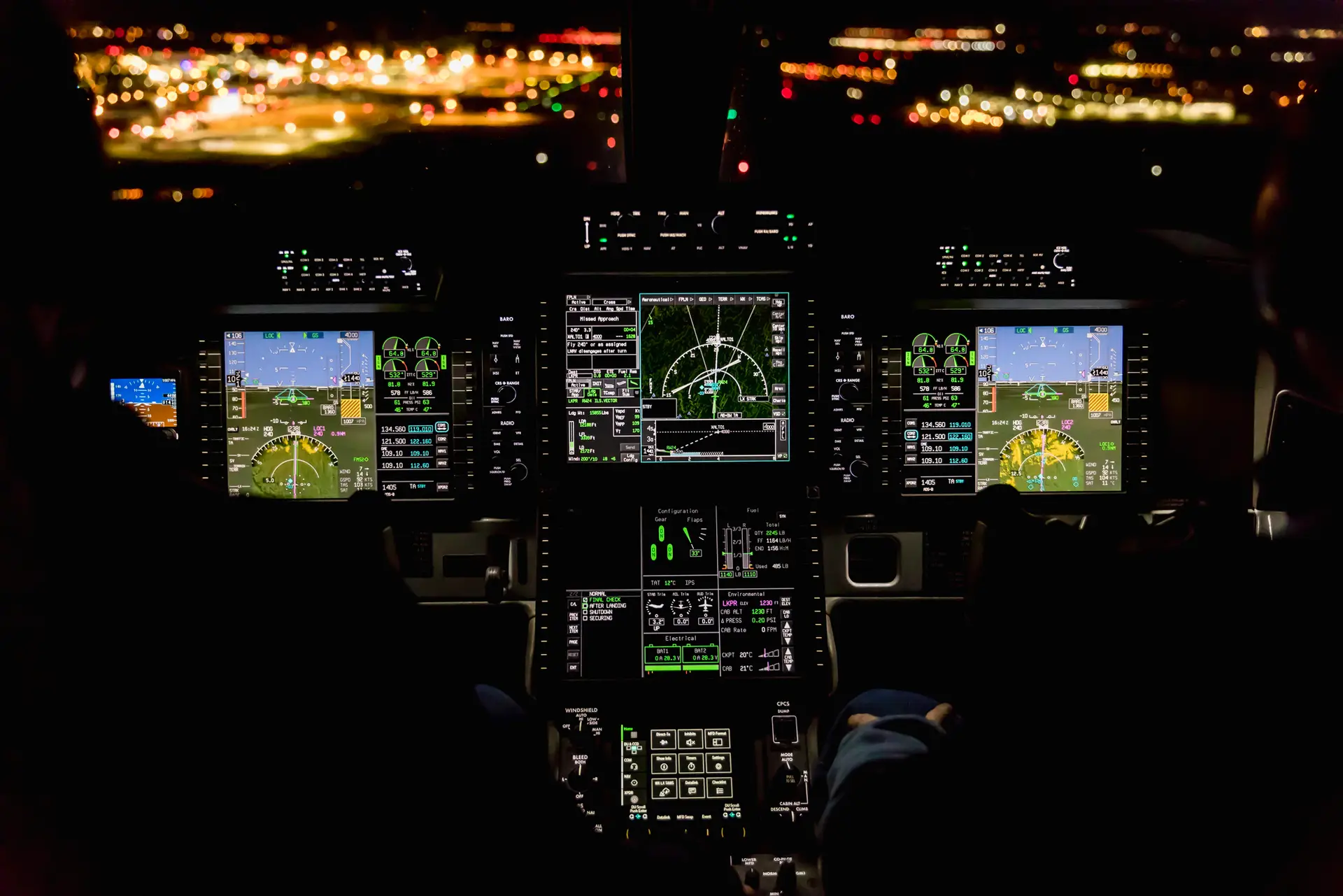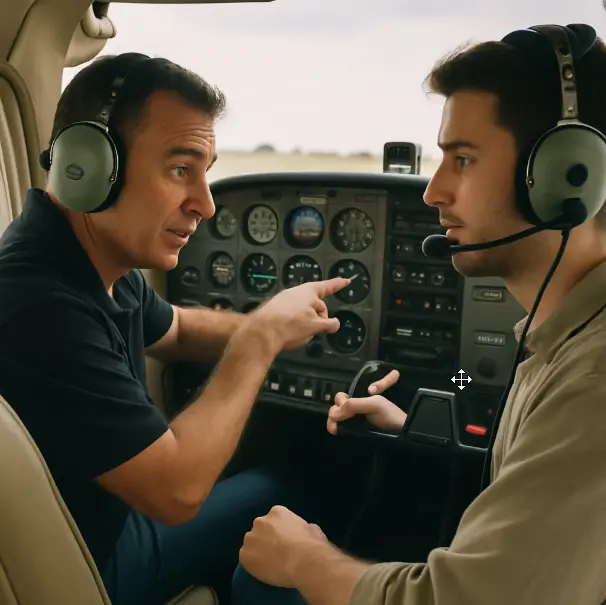VFR Challenges – Nail Your Next Cross-Country Like a Pro

- aviatorpro_6714
Before embarking on a VFR cross-country flight, it’s essential to have a solid understanding of the basic principles of VFR flying. This involves navigating by sight, using visual landmarks, and relying on charts and your own observations rather than relying solely on instruments. The ability to interpret these visual cues accurately and consistently is what sets proficient VFR pilots apart. It’s crucial to stay aware of weather conditions and airspace regulations to ensure safety. Ignoring these can lead to dangerous situations, including unintended airspace incursions or encounters with adverse weather.
VFR flying demands a keen awareness of one’s surroundings, often requiring quick decision-making and adaptability. Familiarizing yourself with the terrain, landmarks, and potential obstacles along your planned route is indispensable. Remember, the beauty of VFR flying lies in the freedom it offers, but that freedom comes with the responsibility of maintaining constant vigilance and preparedness. Understanding and respecting your limitations as a pilot is equally important as any technical skill. Continual self-assessment and learning are key components of safe VFR operations.
The Importance of a Pilot’s License
To fly under VFR, obtaining a pilot’s license is a must. This certification demonstrates that you have acquired the necessary skills and knowledge to operate an aircraft safely. During your training, you’ll learn about aerodynamics, meteorology, navigation, and more. This foundational knowledge is not only a legal requirement but also equips you with the tools to handle a variety of flight scenarios. A pilot’s license is not just a legal requirement; it’s your passport to the skies.
Moreover, the journey to obtaining a pilot’s license instills a sense of discipline and responsibility. The rigorous training and testing ensure that you are prepared to face the challenges of flight. Beyond the technical skills, the process fosters critical thinking and decision-making abilities that are crucial in aviation. Continuing education and recurrent training are also essential, as they keep your skills sharp and update you on new regulations or technologies. Embracing a mindset of lifelong learning will enhance your flying proficiency and safety.
VFR Flight Planning: Setting the Stage for Success
Proper flight planning is the cornerstone of any successful VFR cross-country journey. A well-thought-out flight plan not only ensures a smoother flight but also prepares you for unexpected challenges. It serves as a roadmap, guiding you through the intricacies of the journey while allowing flexibility to adapt to changing conditions.
Route Selection
Choosing the right route is critical. Consider the terrain, weather forecasts, and airspace restrictions. Opt for a path that offers clear visual references and avoids congested airspace whenever possible. This strategic planning reduces the stress of navigating through busy or unfamiliar areas. Remember, the shortest route isn’t always the safest or most efficient.
Prioritize routes that offer easy access to alternate airports and emergency landing options.
Additionally, consider the time of day and the sun’s position, as these can affect visibility and navigation. Planning for landmarks that are easily identifiable from the air can greatly enhance your situational awareness. Pre-flight simulations or practice runs can also help familiarize you with the chosen route, highlighting potential challenges and allowing you to refine your plan before the actual flight.
Weather Considerations
Weather can be a VFR pilot’s best friend or worst enemy. Before takeoff, meticulously check the weather forecasts, including wind patterns, visibility, and potential hazards like storms or fog. This information is crucial for making informed decisions about your flight. Be prepared to alter your plans if the weather conditions are not favorable. Safety should always be your priority, and sometimes this means postponing a flight or choosing an alternative route.
Understanding weather patterns and how they evolve over time is an invaluable skill for any pilot. Develop the habit of continually monitoring weather updates throughout your journey to stay ahead of any sudden changes. Utilize tools like flight planning apps and aviation weather services to get real-time updates. Being proactive rather than reactive can make all the difference in maintaining safety and avoiding unnecessary risks.
Fuel Management
Running out of fuel mid-flight is every pilot’s nightmare. Calculate your fuel needs carefully, taking into account the distance, headwinds, and any planned detours. This involves more than just simple arithmetic; understanding how different conditions affect fuel consumption is key. Always plan for a reserve to cover unforeseen circumstances. This buffer is your safety net, providing peace of mind and flexibility.
Effective fuel management also includes regular checks during the flight. Monitoring your fuel consumption against your initial calculations can alert you to potential issues early, allowing for corrective action. Familiarize yourself with refueling options along your route, and never hesitate to make an unscheduled stop to refuel if needed. Prioritizing fuel management is a hallmark of a responsible pilot.
Navigational Aids
While VFR flying relies on visual cues, it’s wise to familiarize yourself with navigational aids. Modern GPS systems can be invaluable, especially in unfamiliar areas. These tools offer precise location data, helping you stay on course and make timely adjustments. However, never rely solely on technology; always have a backup plan and know how to navigate using traditional methods. Skills such as dead reckoning and pilotage are fundamental and can be crucial if technology fails.
Regularly updating your navigational skills ensures that you remain competent in both modern and traditional methods. Practice using paper charts and manual calculations to maintain proficiency. This dual approach to navigation not only enhances safety but also enriches your overall flying experience. Embracing a variety of navigational tools and techniques will make you a more versatile and confident pilot.
Executing Your VFR Cross-Country Flight
With a solid flight plan in hand, it’s time to execute your cross-country adventure. Here’s how to ensure a smooth flight. Execution involves not just following the plan but also adapting to real-time conditions and challenges.
Pre-Flight Checks
Conduct thorough pre-flight checks on your aircraft. Ensure all systems are functioning correctly, and there are no mechanical issues. This routine is your first opportunity to catch potential problems before they become serious. Safety is paramount, and a meticulous pre-flight inspection is your first line of defense against in-flight problems.
Beyond the standard checklist, consider the specific demands of your flight. Are there particular systems or components that require extra attention due to the length or nature of the journey? Take the time to address these concerns thoroughly. Engaging with your aircraft on this level not only increases safety but also builds your confidence in its capabilities.
Communication
Effective communication is key to a successful VFR flight. Maintain regular contact with air traffic control and other relevant authorities. This ongoing dialogue helps keep you informed of any changes in airspace restrictions or weather conditions. Clear communication helps prevent misunderstandings and ensures you are aware of any changes in airspace restrictions or weather conditions.
In addition to communicating with control towers, stay in touch with other pilots when necessary. Sharing information about flight conditions and experiences can be incredibly valuable. Equip yourself with the right technology to facilitate seamless communication, and always be polite and professional in your interactions. Good communication skills are a vital part of maintaining situational awareness and ensuring a safe flight.
Staying Vigilant
During your flight, remain vigilant and keep an eye on the weather, fuel levels, and your position. Regularly check your progress against your flight plan and be ready to make adjustments as needed. Vigilance is about maintaining a proactive mindset, always anticipating the next step or potential challenge. Staying alert and adaptable is crucial to handling unexpected situations.
Developing routines, such as scanning instruments and the horizon at regular intervals, can help maintain focus. Practice situational awareness exercises regularly to refine this skill. Remember that vigilance extends beyond your immediate environment to include monitoring other aircraft and maintaining awareness of airspace boundaries. A vigilant pilot is a safe pilot, capable of responding effectively to the dynamic nature of flight.
Overcoming Common VFR Challenges
Even with careful planning, VFR cross-country flying can present challenges. Here’s how to tackle some of the most common issues. Understanding these challenges in advance allows you to develop strategies to mitigate them effectively.
Navigational Errors
Mistakes happen, but knowing how to recover is vital. If you find yourself off course, stay calm. Use your charts and navigational aids to determine your position and adjust your route accordingly. This is an opportunity to apply your training and demonstrate your competence. Practice makes perfect, so consider simulating these scenarios during your training.
Develop a habit of cross-referencing visual cues with your charts and instruments. This practice helps build a mental map of your surroundings, making it easier to identify when something is amiss. If you feel uncertain, it’s always wise to seek assistance from air traffic control. They can provide guidance and reassurance, helping you get back on track safely.
Weather Changes
Unforeseen weather changes can occur, even with thorough planning. If you encounter deteriorating conditions, prioritize safety. It may be necessary to divert to a nearby airport or turn back. Always have an alternate plan and be prepared to implement it when needed. Flexibility is your greatest asset when dealing with unpredictable weather.
Developing the ability to interpret weather signs and patterns in-flight can provide you with valuable lead time to make decisions. Regularly update your knowledge of weather phenomena and their implications for flight. Build a network with fellow pilots to share weather experiences and insights. This community knowledge can be an invaluable resource when facing weather-related challenges.
Airspace Violations
Navigating airspace can be complex, especially near busy airports. Stay updated on airspace regulations and ensure you’re familiar with the rules for each segment of your journey. Knowledge of these regulations is crucial for maintaining safe and legal operations. If you inadvertently enter restricted airspace, communicate with air traffic control immediately to resolve the situation.
Educate yourself on airspace classifications and the specific requirements for each type. Utilize tools like sectional charts and digital navigation apps to visualize airspace boundaries clearly. Practicing scenarios involving airspace transitions in simulators can enhance your understanding and confidence. Respecting airspace regulations is not just about compliance but also about ensuring the safety of yourself and others.
Enhancing Your VFR Skills
Continuous learning and practice are vital for any pilot. Here are some tips to enhance your VFR cross-country flying skills. Embracing a mindset of growth ensures you remain a competent and confident pilot.
Advanced Training
Consider enrolling in advanced VFR courses or workshops. These programs offer valuable insights and techniques to tackle more challenging conditions and improve your overall flying proficiency. Advanced training can introduce you to new perspectives and methodologies, broadening your understanding of flight.
Explore specialized training such as mountain flying or night VFR, which can add depth to your skillset. Engaging with experienced instructors and peers provides a collaborative learning environment where you can exchange ideas and experiences. This not only enhances your technical abilities but also fosters a sense of community and shared passion for aviation.
Simulated Flights
Utilize flight simulators to practice cross-country scenarios. Simulators are an excellent tool for honing your skills without the risks associated with real flights. They provide a controlled environment where you can experiment with different routes, weather conditions, and emergency situations. This practice builds confidence and reinforces learning.
Incorporate scenarios that challenge your decision-making and problem-solving skills. Regularly update the simulation software to reflect current aviation standards and technologies. Simulated flights are an opportunity to push your limits safely, preparing you for a wide range of real-world situations.
Join a Flying Club
Joining a flying club provides access to experienced pilots and instructors who can offer guidance and mentorship. It’s also an opportunity to network with fellow pilots and share experiences and tips. Being part of a community fosters a supportive environment where continuous learning thrives.
Flying clubs often organize group flights and events, providing practical experience and camaraderie. They may also offer access to a diverse fleet of aircraft, allowing you to expand your flying experience. Engaging with a flying club enriches your aviation journey, offering both educational and social benefits.
Conclusion: Soar with Confidence
VFR cross-country flying can be a rewarding and unforgettable experience when approached with the right mindset and preparation. By understanding the basics, planning meticulously, and staying vigilant during your flight, you can transform potential challenges into seamless adventures. The journey is as much about personal growth and achievement as it is about reaching your destination.
As you continue to build your skills and confidence, remember that every flight is an opportunity to learn and grow as a pilot. Cherish the learning process and celebrate your progress, no matter how small. So, the next time you take to the skies, you’ll be ready to nail your cross-country journey like a pro, embracing the freedom and challenges of flight with confidence and enthusiasm.



